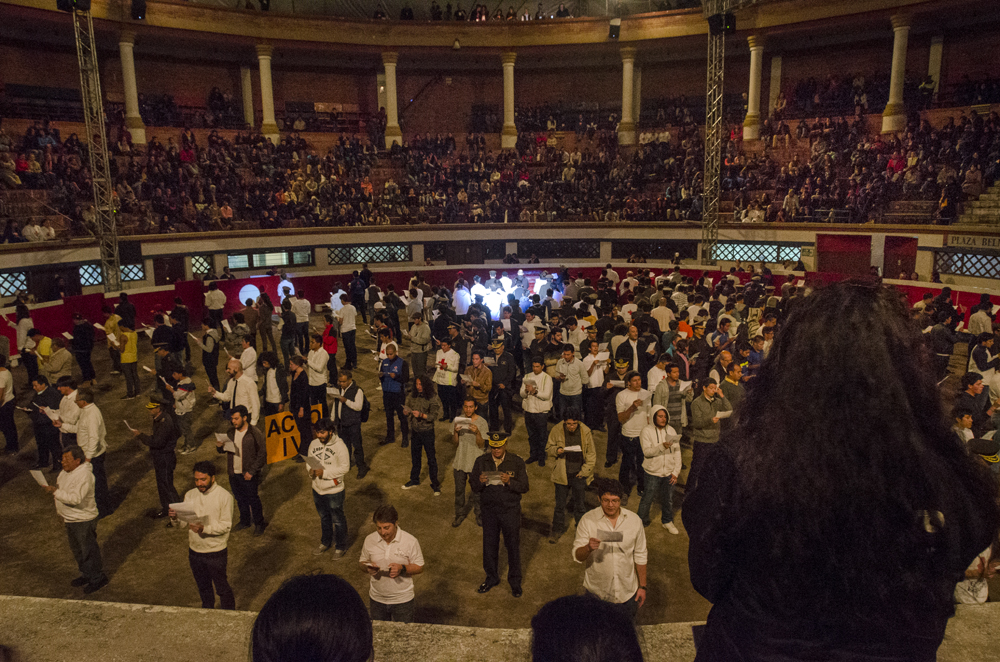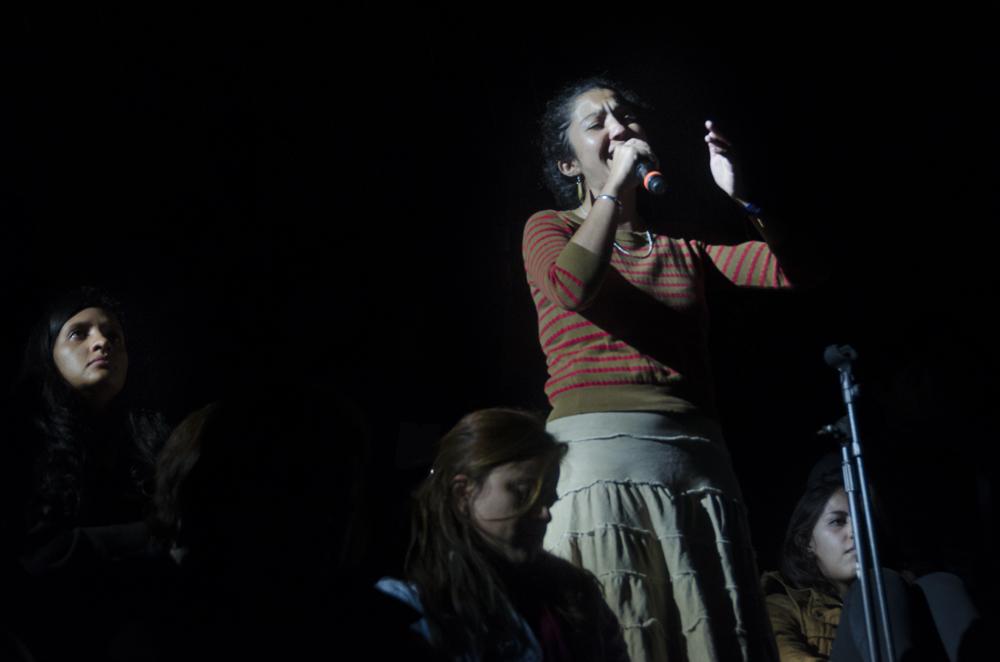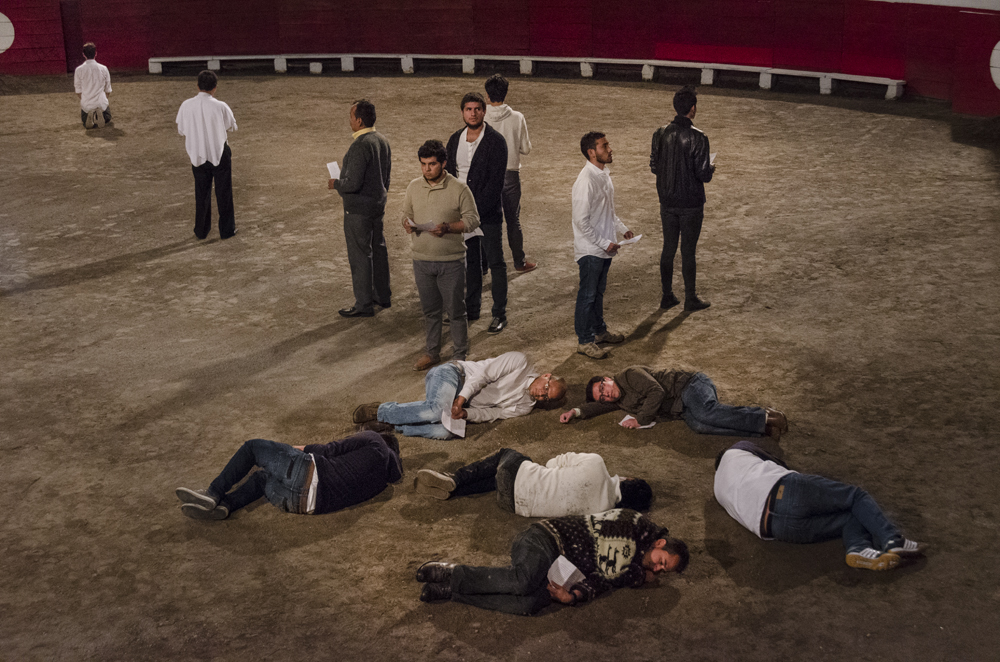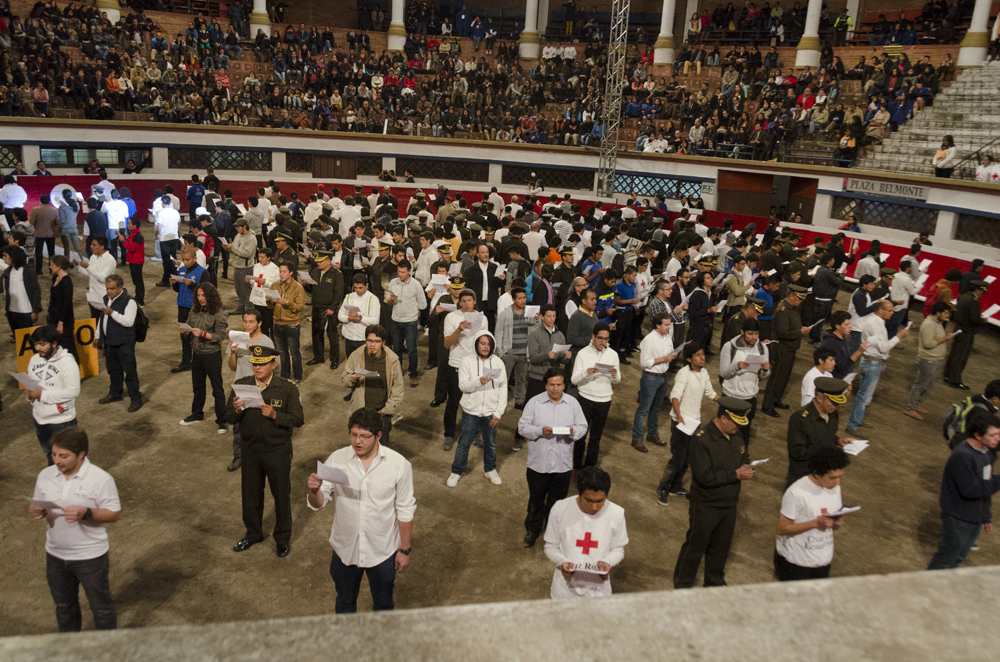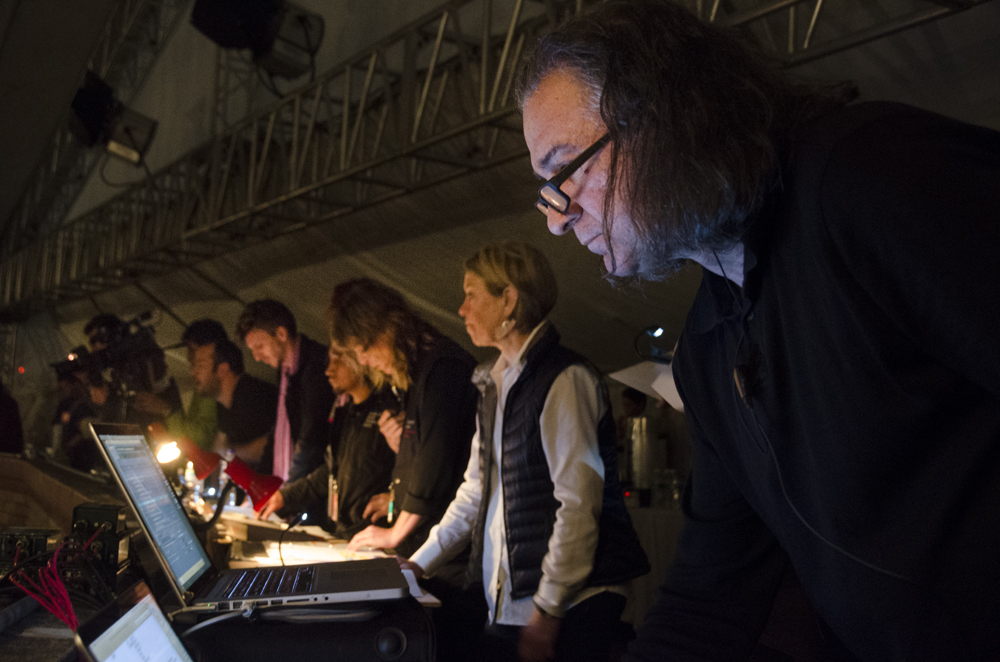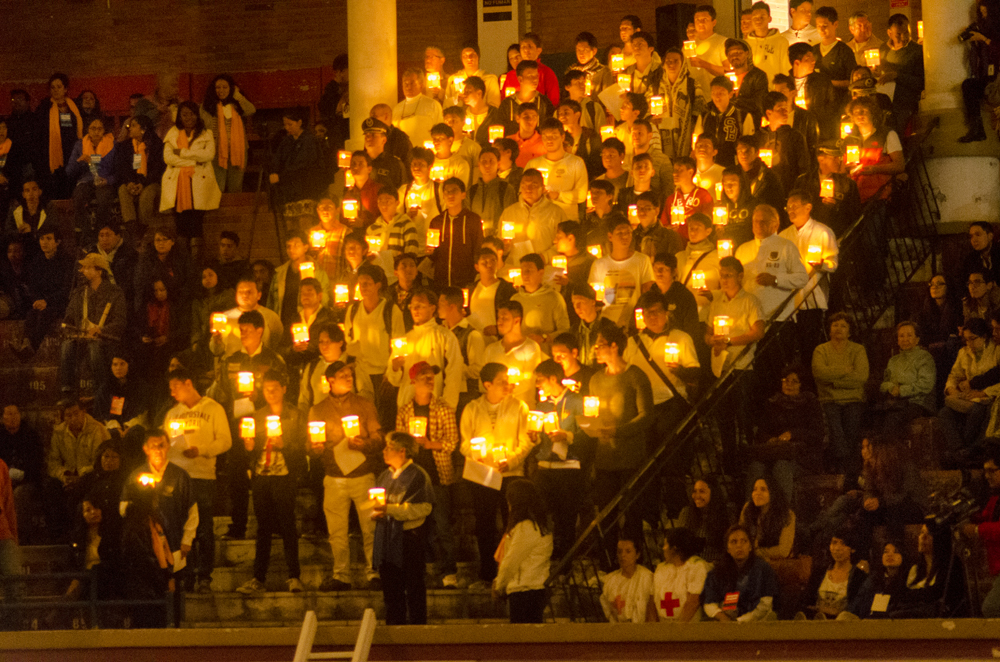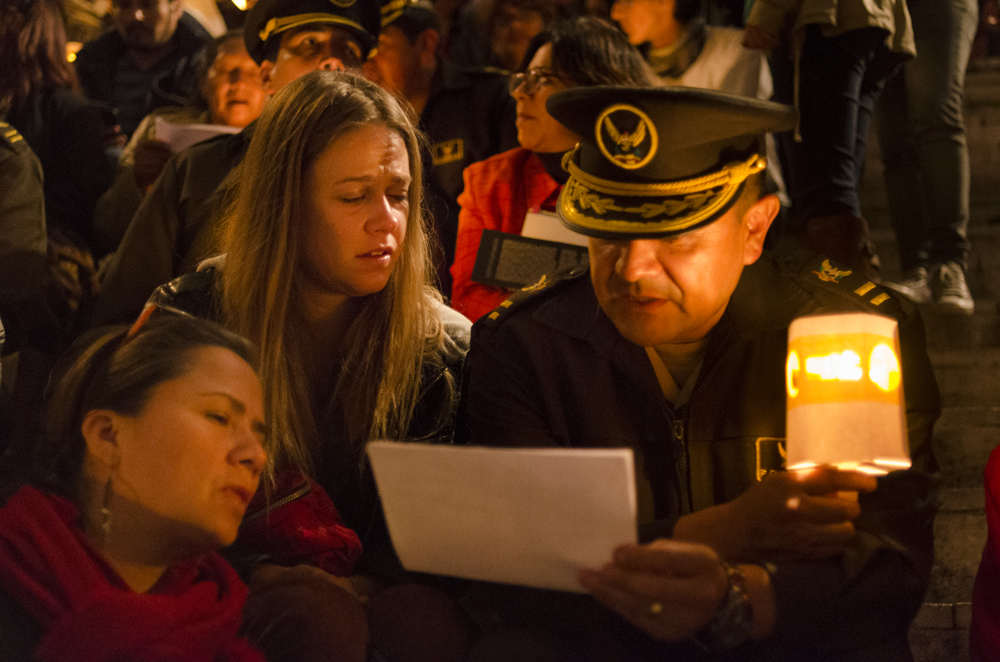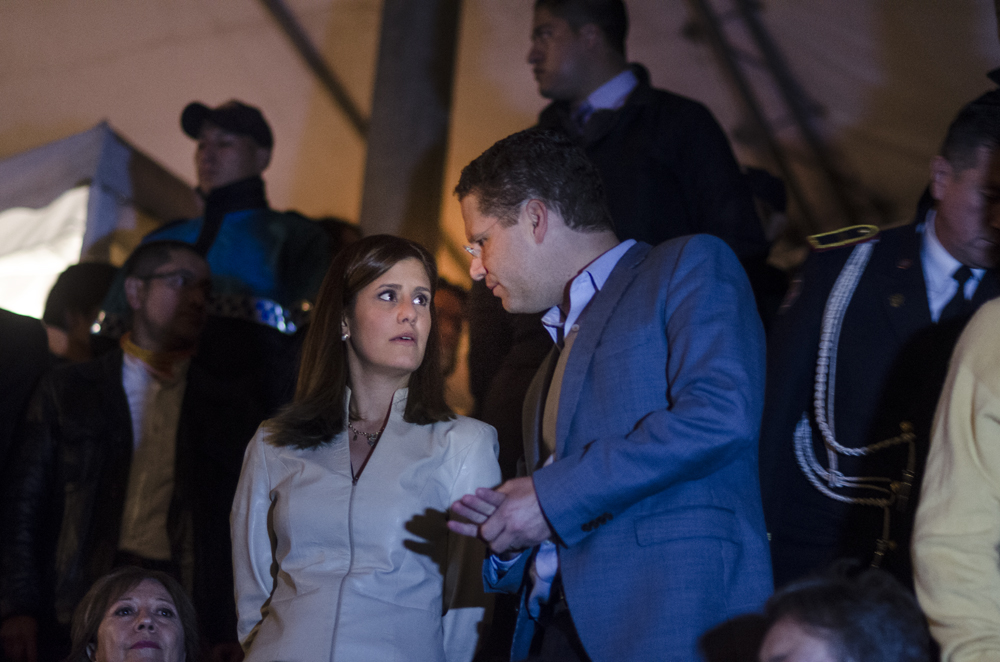De tu puño y letra, Quito, Ecuador, 2014-2015
In Ecuador, an estimated 6 of every 10 women are victims of violence and only 10% of women escape violent partners. When Lacy arrived in Quito in 2014 she was introduced to the 2012 Cartas de Mujeres project, where 10,000 Ecuadorian women wrote letters on their experiences of violence. She saw the letters as an unanswered plea for action.
De tu Puño y Letra (By Your Own Hand) explored the difficulties of including men more centrally in this issue. Accompanied by the City Band, over 1500 people entered the Plaza Belmonte, greeted by Mediators who served key roles in bringing the audience into the conversational nature of the event. The first three “acts” within the bullring featured a relentless narrative drawn from the authentic voices of Ecuadorian women as read by men—on childhood, the body, and intimate partner violence. The ring slowly filled with hundreds of men of all ages and from all walks of life (including many police officers), who together read individual letters, creating a crescendo of sound, broken by an abrupt silence. The voice of elderly white-haired women amidst 300 men, asked “Why do you call this love?”
Surprise interventions from live musicians built throughout until the 4th act, Separating, when readers explored what it took for these real women to escape while performers left the bullring and reappeared among the audience. The last act took place in the audience, where 300 men huddled over candles to read “their” letters to intimate groups of two or three people at a time, the ensuing conversation becoming the final gesture in the performance involving Mediators, Letter Readers and audience members alike one collaborators hoped to encourage long after the project concluded.
This project constituted a form of Social, Public, Practice Art that combines various expressive media and artistic explorations with concrete actions; that engages with broad partnerships inside and outside the arts; and one that addresses substantial matters of public importance as defined through a participatory methodology. Surely one of the most important, and visible global issues of our times is that of violence against women and children.
For more information on collaborators and the project, please click here
Brochure printed by The Rockefeller Foundation Bellagio Center
Photographs featured by Christoph Hirtz.

